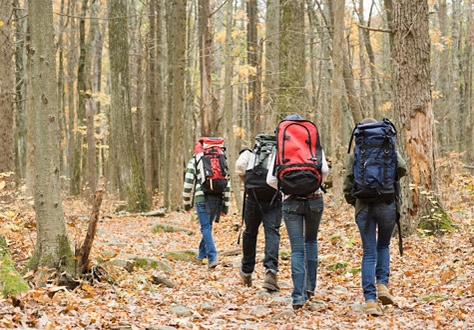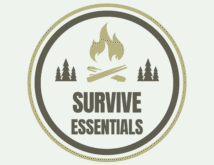
Venturing into the wilderness can be an exhilarating experience, but it’s important to prioritize safety to ensure a successful and enjoyable outdoor adventure. In this blog post, we’ll explore essential tips for wilderness safety that will help you prepare for outdoor excursions and navigate potential challenges. From trip planning and gear selection to navigation techniques and emergency preparedness, these guidelines will empower you to have a safe and rewarding wilderness experience.

1. “Trip Planning: Research and Prepare”
Thorough trip planning is the foundation of wilderness safety. Research your destination, including weather conditions, terrain, potential hazards, and wildlife encounters. Obtain maps and guidebooks specific to the area and familiarize yourself with the local regulations. Share your trip itinerary with a trusted person and establish check-in times. Planning ahead ensures you are well-informed and can make educated decisions during your wilderness adventure.
2. “Gear Selection: Pack the Essentials”
Selecting appropriate gear is vital for wilderness safety. Invest in quality equipment, including a sturdy backpack, proper clothing layers, footwear suitable for the terrain, navigation tools (such as a map, compass, or GPS device), a reliable headlamp or flashlight, a first aid kit, a fire-starting kit, a multi-tool, and sufficient food and water supplies. Pack additional items based on the specific activities you plan to engage in during your wilderness trip. Having the right gear ensures you are prepared for any situation that may arise.
3. “Navigation Techniques: Find Your Way”
Navigating in the wilderness requires knowledge of basic navigation techniques. Familiarize yourself with reading maps, using a compass, and understanding topographical features. Practice these skills in familiar environments before venturing into more challenging terrain. Utilize landmarks, natural features, and navigational aids to maintain your bearings. Enhancing your navigation abilities will prevent you from getting lost and enable you to find your way back to safety.
4. “Emergency Preparedness: Plan for the Unexpected”
Prepare for potential emergencies by carrying essential supplies and knowing how to respond to different scenarios. Familiarize yourself with wilderness first aid techniques and CPR. Learn how to signal for help using whistles, mirrors, or smoke signals. Pack emergency shelter options, such as a lightweight tent or emergency bivvy. Carry extra food, water, and fire-starting materials in case of unexpected delays. Having a comprehensive emergency plan increases your chances of staying safe during unforeseen circumstances.
5. “Weather Awareness: Stay Informed”
Stay updated on weather conditions before and during your wilderness adventure. Check local weather forecasts and be aware of potential changes in weather patterns. Be prepared for sudden shifts in temperature, storms, or other severe weather events. Adjust your plans accordingly to ensure your safety and well-being. Weather awareness allows you to make informed decisions and avoid unnecessary risks.
6. “Wildlife Encounters: Respect and Observe”
Wildlife encounters can be exciting but also pose potential risks. Maintain a safe distance and avoid approaching or feeding wild animals. Store food securely to prevent attracting wildlife to your campsite. Learn to identify signs of wildlife presence and understand how to react appropriately. Respect the natural habitat and observe animals from a distance to ensure your safety and the well-being of the wildlife.
7. “Leave No Trace: Preserve the Wilderness”
Adhere to Leave No Trace principles to minimize your impact on the environment. Pack out all trash, dispose of waste properly, and respect protected areas and sensitive ecosystems. Camp in designated areas and follow fire restrictions to prevent wildfires. Leave the wilderness as you found it, preserving its beauty for future generations. By practicing Leave No Trace principles, you contribute to the preservation of pristine wilderness areas.
Conclusion
Prioritizing wilderness safety is crucial for a successful and rewarding outdoor adventure. By thorough trip planning, selecting appropriate gear, mastering navigation techniques, being prepared for emergencies, staying aware of weather conditions, respecting wildlife, and practicing Leave No Trace principles, you can ensure a safe and enjoyable wilderness experience. Embrace the beauty of the wilderness while prioritizing safety to make unforgettable memories in the great outdoors.
As an Amazon Associate we earn from qualifying purchases through some links in our articles.




